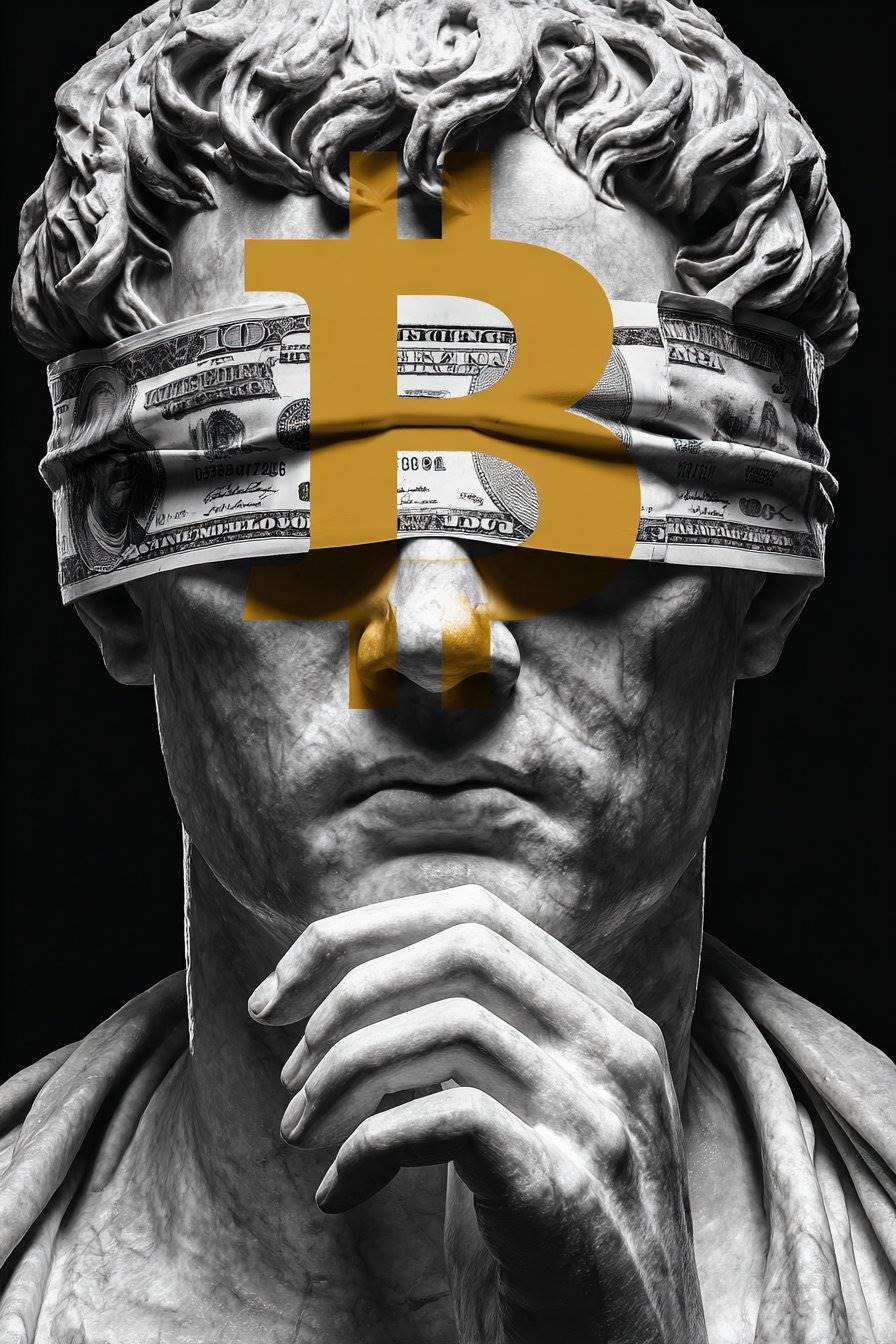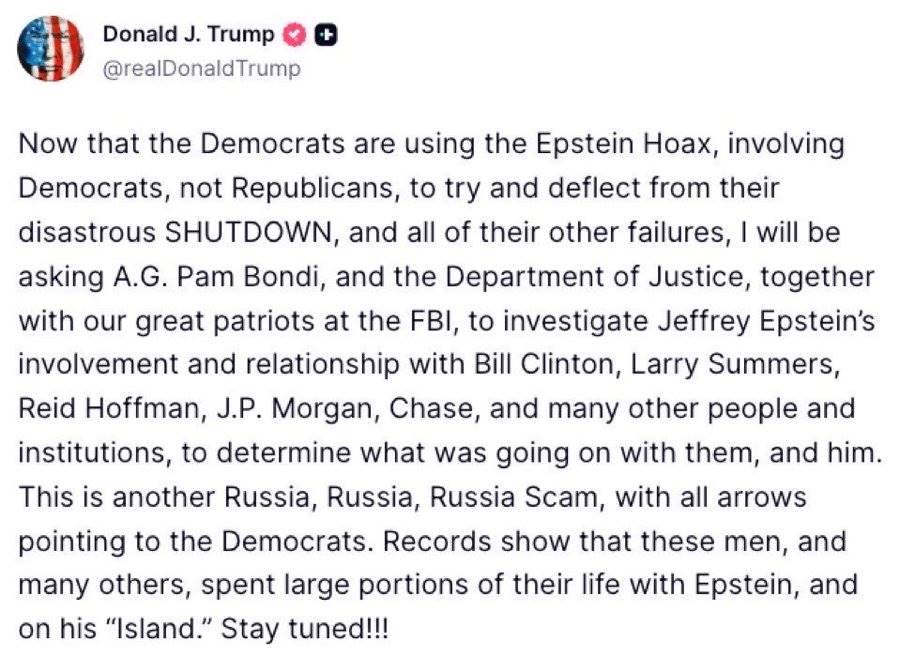This is not just a financial story, nor is it merely a political story.
Author: Maryland HODL (BitBonds = Structural Innovation)
Translated by: Deep Tide TechFlow
The Shadow War of Monetary Power: A Direct Confrontation Between the Old Order and the New Framework
A struggle for monetary power is unfolding before our eyes—but almost no one truly understands the stakes involved. Here is my highly speculative interpretation of this phenomenon.

——@FoundInBlocks
In recent months, a pattern has gradually emerged in politics, markets, and media. Disparate news headlines suddenly began to interconnect, anomalies in the market no longer seemed coincidental, and institutional behavior became unusually aggressive. Beneath the surface, it appears that deeper events are brewing.
This is not an ordinary fluctuation of the monetary cycle.
This is not a partisan struggle in the traditional sense.
This is not the so-called "market volatility."
What we are witnessing is a direct confrontation between two opposing monetary systems:
The Old Order… centered around JPMorgan, Wall Street, and the Federal Reserve.
The New Order… centered around the Treasury, stablecoins, and a Bitcoin-based digital framework.
This conflict is no longer a theoretical debate. It is real, it is accelerating, and for the first time in decades, it is coming into the public eye.
The following content attempts to outline the true battlefield… a battlefield that most analysts cannot see because they continue to interpret a world breaking free from its constraints through the lens of 1970 to 2010.
JPMorgan Steps Out of the Shadows
Most people think of JPMorgan as just a bank. This is a misunderstanding.
JPMorgan is the operational arm of the global financial system… it is the entity closest to the core mechanisms of the Federal Reserve, influencing dollar settlements worldwide, and is also the main executor of the traditional monetary framework.
Therefore, when Trump posted about the Epstein network and explicitly mentioned JPMorgan (rather than pointing to certain individuals), it was not a rhetorical exaggeration. He directly pulled the most central institution in this system into the narrative framework.

Meanwhile:
JPMorgan is the main driver of aggressive short-selling pressure on Strategy (MSTR), occurring at a critical moment when the macro narrative of Bitcoin threatens traditional monetary interests.
Reports indicate delivery delays when clients attempt to transfer their Strategy shares out of JPMorgan, suggesting custodial pressure… such phenomena typically only occur when internal operational mechanisms are under significant stress.
(Source: https://x.com/EMPD_BTC/status/1991886467694776531?s=20)
JPMorgan is strategically at the core of the Federal Reserve ecosystem, both structurally and politically. Weakening its position is tantamount to weakening the entire old monetary system itself.
None of this is normal.
And all of this is part of the same story.
The Government's Silent Shift: Returning Monetary Power to the Treasury
While the media focuses on surface topics like culture wars, the real strategic agenda revolves around currency.
The government is quietly working to pull the core power of currency issuance back to the U.S. Treasury… achieved through:
Treasury-integrated stablecoins
Programmable settlement rails
Bitcoin reserves as long-duration collateral
This shift is not a mere adjustment to the existing system; it is a direct replacement of the core power center of the system.
Currently, the Federal Reserve (Fed) and commercial banks (led by JPMorgan) almost monopolize all dollar creation and distribution. If the Treasury and stablecoins become the central issuers and settlement mechanisms, the banking system will lose authority, profits, and control.
JPMorgan is well aware of this.
They fully understand the true significance of stablecoins.
They also know what will happen if the Treasury becomes the issuer of programmable dollars.
Thus, they launched a counterattack… not through press conferences, but through market means:
Derivative pressure
Liquidity bottlenecks
Narrative suppression
Custodial delays
And political influence
This is not a policy debate; it is a struggle for survival.
Bitcoin: An Unexpected Battlefield
Bitcoin is not the target of the attack… it is the terrain of the battle.
The government wishes to quietly engage in strategic accumulation before taking any explicit action to advance a Treasury-led digital settlement system. If plans are announced too early, it will trigger severe market volatility (gamma squeeze), pushing Bitcoin into "escape velocity," making accumulation costs high and uncontrollable.
The problem is that the old system is using gold-like suppression mechanisms to dampen Bitcoin's signals:
Flooding the market with large amounts of paper derivatives
Massive synthetic shorting
Perception warfare
Liquidity raids at key technical levels
Creating custodial bottlenecks at major prime brokers
JPMorgan has mastered these tactics in the gold market for years, and now they are being applied to Bitcoin.
This is not because Bitcoin directly threatens the profitability of the banking sector… but because Bitcoin reinforces the future monetary framework of the Treasury while weakening the position of the Federal Reserve.
The government faces a difficult strategic choice:
Allow JPMorgan to continue suppressing Bitcoin, thus maintaining the ability to accumulate at low prices.
Make a strategic announcement to push Bitcoin to break through, but lose the opportunity for covert positioning before political consensus is reached.
This is why the government remains publicly silent on the Bitcoin issue.
Not because they do not understand Bitcoin… but because they understand it too well.
The Clash on a Fragile Foundation
The entire backdrop of this struggle is built on a monetary system that has existed for over sixty years, characterized by:
Financialization
Structural leverage
Artificially low rates
Asset-first growth
Reserve concentration
And institutional cartelization
Historical correlations are collapsing everywhere because this system is no longer coherent. Traditional financial (TradFi) commentators who view all of this as ordinary economic cycles fail to realize that the entire cycle itself is disintegrating.
This system is breaking apart.
The underlying structure is unstable.
Incentive motives are diverging.
And the two camps (the traditional order represented by JPMorgan and the emerging order driven by the Treasury) are clashing on the same fragile infrastructure. Any misjudgment could trigger a chain of instability.
This also explains why current actions appear so strange, disjointed, and urgent.
Strategy: The Conversion Bridge Under Direct Attack
Now we introduce a key aspect that most commentators overlook.
Strategy (MSTR) is not just another company holding Bitcoin. It has become a conversion mechanism—a bridge connecting traditional institutional capital with the emerging Bitcoin-Treasury monetary framework.
The structure of MSTR, its leveraged Bitcoin strategy, and its preferred stock products effectively convert fiat currency, credit, and fiscal assets into long-term Bitcoin exposure. In this process, MSTR has become the actual entry point for institutions and retail investors who cannot (or do not wish to) hold spot Bitcoin directly, while also providing them with an opportunity to escape from yields suppressed by yield curve control (YCC).
This means:
If the government envisions a future where a Treasury-supported digital dollar coexists with Bitcoin reserves, then MSTR is the key corporate channel to achieve this transition.
JPMorgan is very aware of this.
Therefore, when JPMorgan:
Facilitates large-scale short-selling,
Creates delivery delays,
Pressures MSTR's liquidity,
And fosters negative market narratives, it is not just attacking Michael Saylor (the founder of Strategy). It is attacking the conversion bridge that makes the government's long-term accumulation strategy feasible.
There is even a possible scenario (though still very speculative, but increasingly logical) that the U.S. government may ultimately intervene and make a strategic investment in MSTR. As recently suggested by (@joshmandell6), this intervention could take the form of:
Injecting U.S. Treasury bonds in exchange for ownership of MSTR,
Thus explicitly supporting MSTR's preferred stock instruments and enhancing its credit rating.
Such measures will bring political and financial risks, but at the same time, they will send an undeniable signal to the world: the United States is defending a key node in its emerging monetary framework.
And just the possibility of this is enough to explain the intensity of JPMorgan's attack on MSTR.
Key Window: Control of the Federal Reserve Board
The timeline is becoming urgent.
As @caitlinlong recently pointed out: Trump needs to gain actual control over the governance of the Federal Reserve before Jerome Powell steps down. However, the current situation is unfavorable for him… he is approximately three to four votes behind in the board.
Multiple key nodes are converging simultaneously:
Lisa Cook's Supreme Court challenge, which could delay for months, leading to critical reforms being postponed.
The Federal Reserve Board vote in February 2025, which could solidify a hostile governance structure for the coming years.
The upcoming midterm elections, where poor performance by the Republican Party would weaken the government's ability to readjust monetary power.
This is why the current economic momentum is crucial, rather than waiting to act six months later.
This is why the Treasury's issuance strategy is changing.
This is why stablecoin regulation has suddenly become critical.
This is why the suppression of Bitcoin prices is significant.
And this is why the struggle surrounding MSTR is not a trivial matter, but a structural issue.
If the government loses support in Congress, Trump will become a "lame duck" president… unable to reshape the monetary system and instead trapped by the institutions he tried to bypass. By 2028, this window will be completely closed.
The urgency of time is real, and the pressure is immense.
Broader Strategic Landscape
When you step back and observe the big picture, this pattern becomes incredibly clear:
JPMorgan is fighting a defensive battle, trying to maintain its global node position centered around the Federal Reserve-bank system.
The government is executing a covert transformation, reclaiming monetary dominance for the Treasury through stablecoins and Bitcoin reserves.
Bitcoin has become the battleground, its price being suppressed to protect the old system, while covert accumulation is empowering the new system.
Strategy (MSTR) is the bridge of conversion, the institutional entry point threatening JPMorgan's control over capital flows.
The governance of the Federal Reserve is the key bottleneck, while political timing is the greatest limiting factor.
All of this is happening on an unstable foundation, where any misstep could trigger unpredictable systemic consequences.
This is not just a financial story, nor is it merely a political story.
It is a monetary transformation on a civilizational scale. For the first time in sixty years, this conflict is no longer hidden behind the scenes.
Trump's Gamble
The government's strategy is gradually becoming clear:
Let JPMorgan overreach in price suppression.
Quietly accumulate Bitcoin.
Protect and possibly further strengthen Strategy (MSTR) as a conversion bridge.
Rapidly push for a restructuring of the Federal Reserve governance.
Position the Treasury as the issuer of the digital dollar.
Wait for the right geopolitical moment (possibly the "Mar-a-Lago Agreement") to announce this new framework.
This is not a mild reform, but a complete upheaval of the monetary order established in 1913… monetary power will return from financial institutions to political institutions.
If this gamble succeeds, the United States will enter a new monetary era based on transparency, digital rails, and a hybrid Bitcoin collateral framework.
If it fails, the old system will further strengthen its grip, and the window for change may not open again for a generation.
Regardless of the outcome, the war has already begun.
Bitcoin is no longer just an asset… it has become the fault line between two competing futures.
However, what both sides fail to recognize is that they will ultimately lose to absolute scarcity and mathematical truth.
As these two giants vie for control, be prepared for the unexpected and stay safe.
免责声明:本文章仅代表作者个人观点,不代表本平台的立场和观点。本文章仅供信息分享,不构成对任何人的任何投资建议。用户与作者之间的任何争议,与本平台无关。如网页中刊载的文章或图片涉及侵权,请提供相关的权利证明和身份证明发送邮件到support@aicoin.com,本平台相关工作人员将会进行核查。


